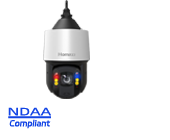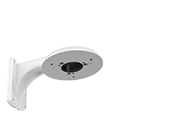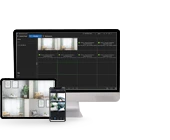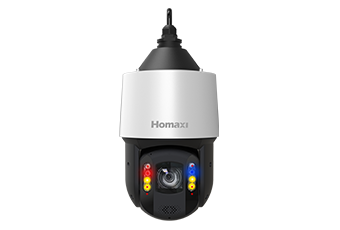Auto Tracking 2.0
Auto Tracking 2.0 is a distinct feature of the PTZ camera that leverages the PTZ system. When a target activates the IVS rule, the camera utilizes its horizontal and vertical rotation along with zoom capabilities to keep the moving target centered on the screen. Powered by an AI algorithm, the camera can determine the direction and velocity of a moving object, enabling consistent and effective tracking of the target.
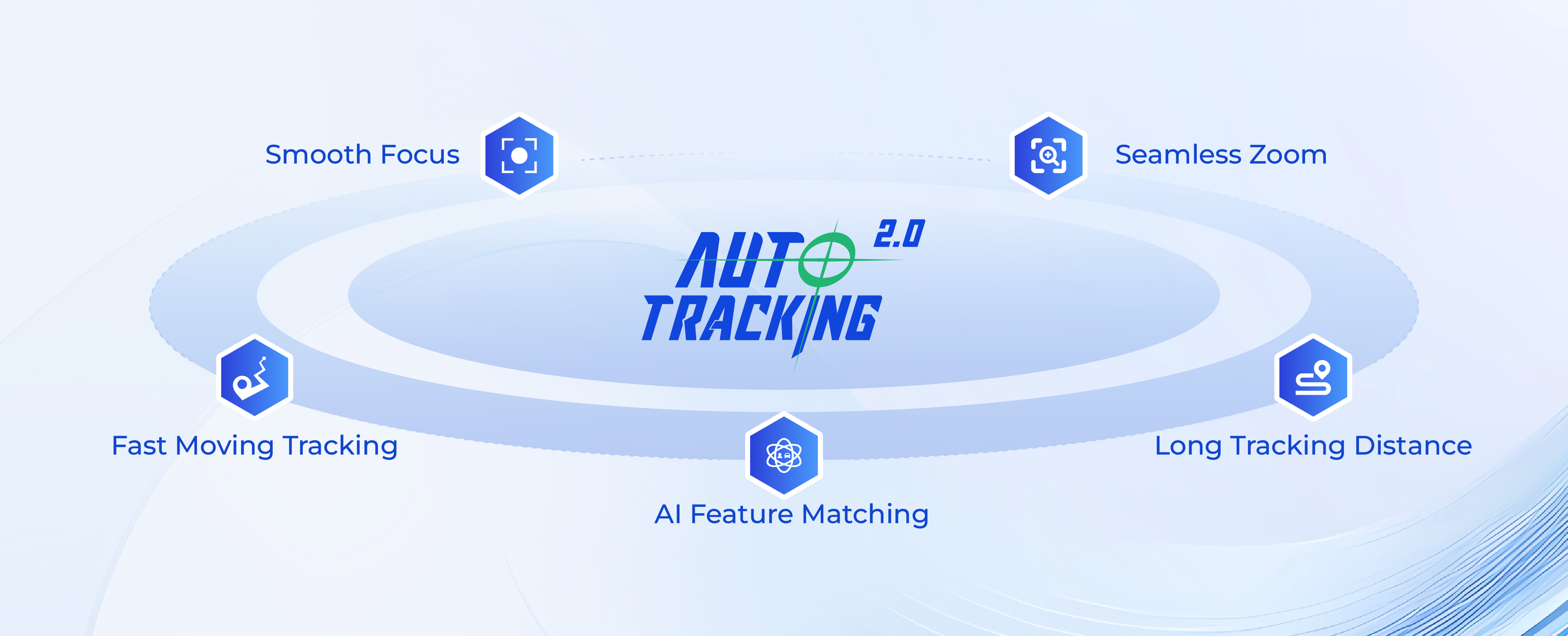
The new Auto Tracking 2.0 has upgraded various algorithms, focusing on distinguishing between humans and vehicles. When humans or vehicles trigger the IVS rule, the system utilizes its pan/tilt rotation and zoom capabilities to keep the target centered on the screen. Enhanced by AI algorithms, it accurately predicts the direction and speed of the object, ensuring seamless, continuous tracking for superior surveillance performance. Additionally, it enhances object tracking performance in complex and challenging scenarios, such as robustness to occlusions, handling complex backgrounds with multiple objects, and adaptability to varying lighting conditions.

Key Features of Auto Tracking
1. Smooth Focus: Enhancing Target Clarity in Motion Tracking
A significant enhancement in Auto Tracking 2.0 is the introduction of Smooth Focus. This feature ensures that the tracked object remains in sharp focus, even when it is moving at varying speeds or through complex environments. It utilizes the Rapid Object Focus Algorithm (ROFA) to dynamically refine the focus, concentrating on the moving object while preserving the visual quality of the backdrop.
Previously, in Auto Tracking 1.0, the focus was more generalized,encompassing both the object and the background. Auto Tracking 2.0 addresses this by giving precedence to the region of interest (ROI) rather than the entire scene, which significantly improves the clarity of images of moving targets, especially over greater distances.

2. Seamless Zoom: Refining Zoom Fluidity to Eradicate Shaky Transitions
A notable issue with previous PTZ cameras was the abrupt, choppy nature of their zoom capabilities. Auto Tracking 2.0 rectifies this with the introduction of Seamless Zoom, engineered to seamlessly manage zoom actions without the disruptions of sudden jumps or shakes. This enhancement proves indispensable when following subjects at varying distances, ensuring uninterrupted and fluid changes across zoom levels.
The refinement offered by Fluid Zoom is especially vital in long-range surveillance scenarios. For instance, the PTZ's advanced precision of 0.1°/s ensures that zooming in on distant targets is executed with smooth, steady movements, thereby maintaining image stability and preventing disruptive jumps or pauses in the footage. Such precision is crucial for continuous, accurate tracking without loss of detail or focus.

3. AI Feature Matching: Enhancing Precision in Complex Environments
Auto Tracking 2.0 features the smart AI feature matching algorithm, a major upgrade that significantly enhances tracking accuracy by identifying the unique attributes of the target. This is particularly helpful in busy scenes or when the tracked object is temporarily hidden by other objects.
This AI-driven technology is adept at picking out key visual features of an object, even when it moves behind obstacles or among other moving figures. This helps prevent the loss of tracking in complex situations, a common problem with older tracking systems that often got confused in such environments. With this new feature, Auto Tracking 2.0 delivers reliable and consistent tracking, ensuring effective surveillance even in challenging conditions.

4. Fast Moving Tracking: Keeping Up with Speed
A critical limitation of older PTZ tracking systems was their struggle to maintain pace with high-velocity objects, such as speeding vehicles or sprinting individuals. Auto Tracking 2.0 overcomes this challenge with its high-speed object tracking feature, driven by a sophisticated speed adaptive algorithm, which ensures smooth and precise following of swiftly moving subjects. The integration of 3D positioning technology enhances this feature, offering real-time spatial context that helps the camera pinpoint the object, thereby significantly reducing tracking errors and improving overall surveillance effectiveness.

5. Long Tracking Distance: Expanding the Surveillance Horizon
In vast outdoor settings, the capability to monitor objects across long distances is indispensable. Auto Tracking 2.0 features Extended Tracking Range, significantly broadening the camera’s tracking reach to up to 3937 ft in optimal conditions. This enhancement is particularly valuable for extensive surveillance areas such as airports, sports stadiums, and urban thoroughfares.
Extended Tracking Range enables consistent monitoring and tracking of objects over large distances without the necessity to switch between multiple cameras. This continuity ensures thorough coverage across wide expanses, thereby minimizing the need for numerous cameras and enhancing the overall efficiency and economic viability of the surveillance infrastructure.

Related Products
Related Video
Marketing Material



